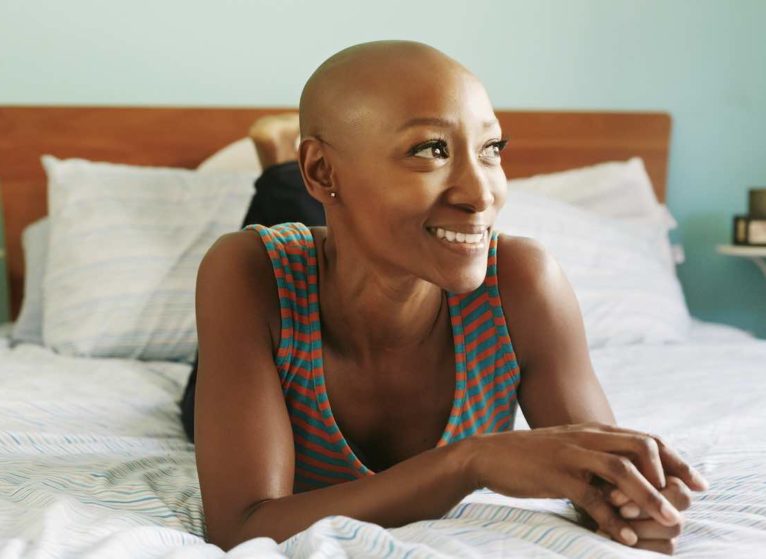The Oscars shed light on more than just the top movies this year. Thanks to the Chris Rock-Will Smith incident, hair loss is also top of mind. We spoke to UVA Health dermatologist Mary Noland, MD, and endocrinologist William Horton, MD, about how much hair loss is normal. They also told us about medical conditions that can lead to baldness and whether hair will grow back.
EVERYONE LOSES A LITTLE BIT OF HAIR
The average person loses 100 strands of hair a day, Noland says. You might see strands of hair in your brush and in the shower. What’s not normal is hair is falling out in clumps like Jada Pinkett-Smith has shared.
HAIR FALLING OUT: POSSIBLE CAUSES
There are a few conditions that can cause you to lose much more than 100 strands a day.
Hair Loss After Childbirth and Other Hormonal Changes
Telogen effluvium, hair loss 3-4 months after you give birth, causes most instances of unusual hair loss, Noland says. Your body holds hairs in a growing phase for awhile, then quickly shifts to a resting phase, so you start losing 300-500 hairs a day. While you won’t see bald spots, your hair will be thinner.
“That’s when people are really concerned. In the shower, they’ll feel like their hair is coming out in masses,” Noland says. “It’s usually some sort of life stress or body stress that does that.” This is why you lose hair 2-3 months after you give birth. Sudden illnesses with a high fever, thyroid disease, high stress, and other things that cause hormonal shifts can also be culprits.
The resting phase of hair growth only lasts 2-3 months. If you can address the cause, you’ll stop losing hair and it will begin growing again. Your doctor may prescribe vitamins to help you regrow healthy hair. You should avoid chemical treatments such as highlights, hair dye, or a perm during this time.
Hair Falling Out As You Age
Women and men both experience hair thinning and a receding frontal hairline as they age. You won’t see lots of hair falling out at once, just a gradual change. Drugs such as Rogaine can help you regrow your hair.
Alopecia and Scarring Hair Loss
Alopecia areata is the condition that led to Jada Pinkett-Smith’s hair loss. It is a common autoimmune disease. It happens when your immune system attacks hair follicles, and hair falls out in clumps. Doctors can easily treat it with medication, Noland says.
Scarring hair loss is more concerning, Noland says. The hair follicles are destroyed, and you can’t regrow your hair. Sometimes you may have itching and redness. Your dermatologist will prescribe medication to treat the underlying cause, and you may need to take it on a long-term basis.
Since scarring hair loss is permanent, it’s important to see a dermatologist if you have unexplained hair loss.
Is Your Hair Falling Out?
Talk to a UVA specialist about the possible causes of hair loss.
Thyroid Conditions Can Lead to Reversible Hair Loss
Thyroid hormone plays a key role in the development and health of hair follicles. If the thyroid isn’t working right, it impacts hair growth. Two of the most common types of thyroid disorders are:
- Hypothyroidism, when the thyroid doesn’t produce enough thyroid hormone
- Hyperthyroidism, when the thyroid produces too much thyroid hormone
Most people with mild cases of these disorders will not experience hair loss, according to Horton. “It is unusual for mild or short-lived hypo- or hyperthyroidism to cause hair to fall out. If the thyroid dysfunction is prolonged or severe, that increases the likelihood of hair loss,” he says.
In these severe cases, hair loss can be significant, often happening across the entire scalp rather than in patches. The good news: hair regrowth is often possible with successful treatment of the thyroid disorder. “Appropriate treatment usually leads to hair regrowth, though it may take a few months, and it may not be complete,” says Horton.



I wake up to a clump of about 20 to 30 hairs in the collar of my shirt. I have never noticed this happening before. Is this normal?
Courtney, we’re sorry to hear this, but we can’t give medical advice on the blog. We recommend you contact your primary care doctor about this. If you would like to make an appointment at UVA Health, you can request online or call 434.924.0000.
I started having stress shedding similar to when i was postaprtum .. right now due to covid-19 lockdown i have little kids at home – trying to manage school for them from home and work and its been rough. I did start taking the vitamin I took when I was postpartum from baby blues https://babyblues.care/products/baby-blues-hair-vitamins and its been helping with the shedding and thin texture my hair gets when I’m stressed. So I guess that’s my good tip. I’m too fearful to start rogaine or anything that has an initial shedding period.